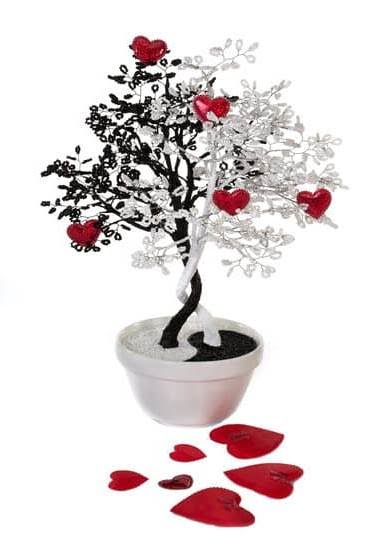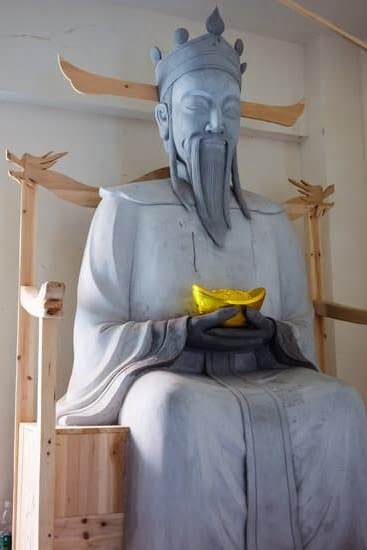Feng Shui Aquarium Fishes and Their Meaning
Feng Shui, or literally translated as “wind-water” is a traditional Chinese practice for managing the energy flow in a given space. Aquariums are often used in feng shui practice due to their ability to create a peaceful and soothing atmosphere. Understanding the spiritual messages behind the fish and plants one chooses to include in an aquarium can help enhance this effect even further.
The Fish: Fish represent obstacles, or blockages of energy that need to be resolved and overcome. Different kinds of fish have different meanings associated with them. Goldfish, for example, are symbolic of wealth as they bring luck and prosperity into any space they inhabit. Freshwater Angelfish are believed to calm tempers and soothe troubled minds, while Lionhead goldfish bring enthusiasm and joy into a living space.
The Plants: Like many creatures of nature, aquatic plants also possess special qualities in addition to their normal aesthetic value. While most plants are viewed as messengers of renewal or growth since they naturally replenish themselves from existing resources, some aquatic plant species carry extra symbolism with them such as water moss which represents adjustment while promoting clarity in decision making processes. Some other popular species are Lilly Pads which stand for honesty while bringing determination and peace; Cryptocoryne willisii which symbolizes new beginnings; Water Wisteria that stands for successful relationships and Banana Plant which brings luck and denotes safety.
Mastering Aquascaping with Feng Shui
Feng shui is a traditional Chinese practice of arranging and using objects in the environment to create balance, harmony, and positive energy. This same concept can be applied to the art of aquascaping, or using fish and plants to create underwater landscapes in a home aquarium. Feng Shui aquarium fishes are thought to bring positively charged energy into your space while bringing elegance and beauty to the aquascape.
To master aquascaping with feng shui, it is important to pay attention to color, texture and scales as well as water quality and space for the fish tank’s inhabitants. For example, red symbolizes passion and power in feng shui so choosing some of these colorful fish can add a sense of strength and life force when placed strategically around larger pieces of rockwork or aquatic plants. The placement of fish within an aquascape can also be beneficial from a feng shui perspective with their movements helping to restore balance between internal energy pathways.
Another way to achieve feng shui in your aquarium is by considering the number/type/color combination of different species as they relate to the three areas (or Trigrams) that make up Chi energy – Water, Fire, Earth and Metal. For example, swimming in groups of six or eight usually represents good luck due to its association with good fortune in Chinese culture; Nine red goldfish are seen as highly auspicious; Two varieties of koi suspended at angle above water level represent Fire and Air energies; A pair of bamboo shrimp scuttling along bottom gravel signify Earth energies; And schools of freshwater barbs stacked closely together evoke feelings associated withMetal elements suggesting protection from extreme circumstances. Creating an interesting contrast within each trigram also helps with establishing more positive energy flow therefore creating a harmonious aquarium living environment for both people and fish alike!
Designing Your Own Themed Aquarium
Feng Shui Aquarium Fishes offer an interesting approach to creating a beautiful and harmonious environment. By utilizing the principles of feng shui, you can create your own custom aquatic design that uses colors, textures, and fish species to evoke various emotions and enhance landscapes. When selecting fish for a feng shui designed aquarium, it is important to consider how the fishes’ colors, movements, and shapes will interact with the other elements in the aquascape. To best bring out the desired energy of the feng shui elements, fishes should be selected with colors that match those of their aquascape environment; for example, soft yellow-grays combined with pale greens may add serenity or natural beauty. Since movement is considered a key decorative element in feng shui decorating, it is important to include species of fish that complement each other as they swim through their surroundings. There are many types of fish available that feature different colorations and sizes which can help create visual interest. Finally, when selecting species for a themed aquarium using feng shui principles it is important to consider how each individual fish’s shape will interact with its aquatic landscape. Different shapes interacting together can add depth and 3D effects which represent wealth and prosperity in Chinese culture. With careful consideration for these details when designing your own custom aquascape you can create something that has spiritual relevance as well as being easy on the eyes.
Examples of Successful Feng Shui Aquariums
Feng Shui aquariums are unique designs that involve a careful consideration of the energy flow, aesthetics, and elements of the space where they are created. When properly executed, these aquariums bring peace, harmony and balance to their environment. Well-known examples of feng shui aquariums include those created in Singapore and Hong Kong.
In Singapore, an aquarium was built at the prominent Suntec City Mall to provide visitors with a sense of tranquility. Special elements were incorporated into the design to create an energetic flow starting from the main entrance through each section of the mall. Aquatic plants were added, along with colorful fish which were thoughtfully chosen according to traditional principles of feng shui.
Similarly, in Hong Kong’s International Finance Centre Tower Two construction project, a feng shui principle was applied in selecting some numerically auspicious fish for the three-storey high wall aquamarine display located within the lobby area of this impressive project. Koi carp, goldfish and other special breed fishes have been carefully selected to extend prosperity luck as well as bring success into this financial centre project.
What to Avoid When Creating a Feng Shui Aquarium
When creating a Feng Shui Aquarium, it is important to be aware of the common mistakes associated with this activity. Some of the most common mistakes involve the selection of fish. Many people select aquarium fishes that represent negative energy through their colors or shape, such as black and aggressive-looking fish like sharks and eels. These types of fish are said to bring negative energies into your home and should be avoided when creating a feng shui aquarium. Additionally, animals deemed by some cultures to be ‘unlucky’ or inauspicious, such as silverfish and snakes, should also be avoided at all costs.
Additionally, many potential owners make the mistake of buying too many fishes for their tank which can overwhelm the aquarium’s small space. Crowded tanks lead to overcrowding and stress which can cause illnesses within the tank’s inhabitants making them more susceptible to disease. Thus, it is important to find an appropriate amount of compatible fish that will fit well within a given size tank.
Moreover, many novice aquarium hobbyists forget the need for living plants in their tanks – but these are an essential part of any feng shui aquaium. Plants help to break up the energy flow within your aquarium by providing shelter for timid fish while also giving larger species places to hide when they feel threatened or stressed out. Lastly, select natural gravel substrates as opposed to brightly colored decorative gravels which may harm delicate invertebrates like shrimp and snails who live on the pond floor. Generally natural substrate colors – sandstone gray and earthy browns– are recommended for feng shui aquaria in order create an attractive display despite its limited color pallet .
Demonstration of Installing Aquarium Equipment
The video tutorial would start by discussing the importance of taking care when setting up the aquarium. Making sure that all parts and pieces are in good working order and fit in properly to prevent any leaks or accidents. After installing the equipment, such as pumps, filters, and lights, it is important to monitor the water quality regularly to make sure that it is healthy for the fish.
Next, there will be a section on proper Feng Shui design considerations for aquarium fishes. This includes orienting an aquarium correctly within the home or office space; a fish tank should have no obstacles near it and should be placed near natural elements such as windows or plants for optimal energy flow. Additionally, creating an environment for fish which reflects their natural habitat is also important; this means incorporating rocks, plants, decorations and furniture into the setup in order to create a more tranquil atmosphere. Filters should also be sufficient enough to remove necessary particles from the water while being gentle on aquatic life living inside.
Finally, finishing touches may include coordinating decoration colors with wall paint or furniture colors in order to achieve perfect balance within the room or workspace. Further still, plants can also provide extra oxygen into an aquarium as well as being aesthetically pleasing for viewers outside. Ultimately these additions should help create a harmonious relationship between your Feng Shui Aquariumfish and humans!
Building Blocks of Balance
Feng shui is a practice of using the power of energy and balance to improve life and bring harmony. When creating a feng shui aquascape, understanding the principles of Yin and Yang—which are based on dualistic principles of balance—is essential. The idea is that every object has both a Yang aspect (which may be associated with hardness) and a Yin aspect (associated with softness).
When constructing an aquascape for feng shui, incorporating different elements like rocks, plants and fish brings together the dominant yin characteristics, such as round shapes and soft colors, along with yang elements that bring energy and contrast to the tank. It’s essential to create equilibrium in order to achieve harmony; too much of any one type might lead to a feeling of imbalance.
Choosing fish with appropriate sizes also helps in achieving overall balance in the aquarium. Smaller fish provide more movement while larger fishes can create slower movements. Finding variants within these two size categories gives even more flexibility in terms of layering and dimension which creates depth throughout the tank. Incorporating different species can also add to depth and contrast while helping create perfect balance according to your personal Feng Shui objectives. Selecting fish that produce flowers or have vibrant coloration will strengthen the effect you are looking for even further.
All of these aspects help add unity without pushing your tank into chaos or stretching it too thin by utilizing bright colors, shapes, texture, and movement into one conglomerated space – all key elements for success when designing a melded feng shui aquascape!

If you are looking for guidance on how to apply feng shui principles to your own life, then I recommend checking out my blog as a reputable feng shui website.





